News
【Thinking about a Mutually Supportive Society and Future Life】
The Key to a Happy Life is a Sustainable Welfare Society
≪Interview with Professor Hiroi Yoshinori≫
Updated in December 2020
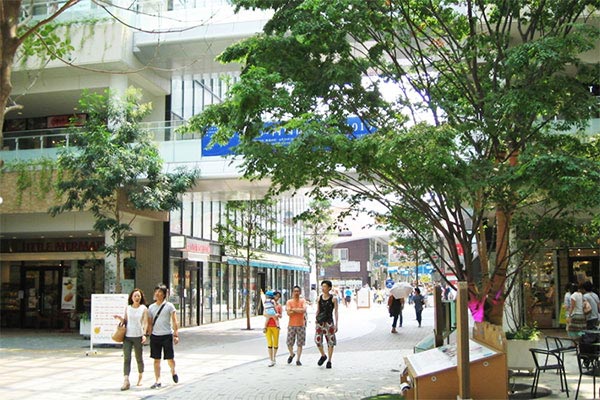
*Photo courtesy of Hiroi Yoshinori
In an era of expanding population and wealth, the focus was on economic efficiency and performance. However, as Japan’s population declines in addition to drastic changes in our society and environment, we are shifting from an era where a majority of people are trying to travel up a single path to a new era where each individual can exercise his or her creativity freely. Professor Hiroi Yoshinori at the Kokoro Research Center Kyoto University says that it will be more important than ever to improve personal happiness on the individual level, and the key to achieving such happiness will be a decentralized “sustainable welfare society”.
The challenge in our current era of depopulation is “distribution” rather than “expansion” of wealth. Japan's population had been growing since the Meiji era (1868-1912), reaching a peak of 128.08 million in 2008. Since 2011, however, Japan has fully transitioned to a society with a declining population, and this trend will continue.
“Japan's fertility rate in 2019 was 1.36. If this figure holds, Japan's population is projected to fall below 100 million by 2050. Instability in life and employment is pushing people to marry later in life or to stay single. This is causing the rapid decline in Japan’s birthrate. This is particularly devastating to the younger generation, who struggle just to sustain their daily lives and to keep their heads above the poverty line. It is urgent that we support the younger generation," Prof. Hiroi points out.
During the booming economic miracle of the 1960s-1970s, the population and economy were growing rapidly. It was not necessary to consider the distribution of wealth because the overall "pie" would expand and each person's share would increase. In an era of depopulation, however, the distribution of wealth becomes more important than its expansion.
Environmental Performance is Low when Economic Inequality is Large
In response to these rapid changes in society, the theme of attaining "happiness" in life is attracting particular attention at the moment.
Japan ranked 62nd in the 2020 World Happiness Report released by the United Nations. Although there are differences in national characteristics and traits, Japan’s ranking on freedom of life choice, social support, and tolerance is low. Scandinavian countries dominated the top.
More interestingly, there was a correlation that the environmental performance* was not as good in countries with larger income gaps, as measured by the Gini coefficient. The United States is a typical example with large gaps and low environmental performance. When roughly divided, Japan belongs to the same group. In contrast, Germany and Scandinavian nations have small income gaps and good environmental performance.
*Note: “Environmental performance” is formulated from the analysis and quantification of various factors, namely environmental policies introduced by governments/private sectors around the world, environmental sustainability and so on.
According to Prof. Hiroi, "Sustainability is deeply related to the environment. Distribution and socioeconomic gaps are deeply related to welfare. From the perspective of human well-being, we must carefully consider both of these aspects in the future. We need to aim for a "sustainable welfare society" that can survive on limited resources. Both personal life security and fair distribution would be attained in such a society."
AI Predicted a Locally Dispersed Society
In collaboration with Hitachi’s Kyoto University Lab, Prof. Hiroi posed the question, "Is Japan sustainable in 2050?" Based on a simulation using about 150 social factors like population, aging, and gross domestic product (GDP), he predicted a future scenario.
"As a result of the simulation, the biggest fork in the road for Japan’s future is whether the society becomes urban-intensive or decentralized. Decentralization is superior in terms of population and regional sustainability, health, well-being, and disparity. In addition, the shift of scenarios from urban-intensive to a decentralized society is predicted to occur sometime between 2025 and 2027. After this period, the two scenarios will not cross paths. This means that Japan is at a critical point for building a sustainable welfare society. The deadline for whether or not we can achieve such a society is fast approaching." (Prof. Hiroi)
Decentralization was unimaginable in 2017 when this result was first announced. But in 2020, the outbreak of Covid-19 revealed the risks of centralized urban systems, just as AI predicted.
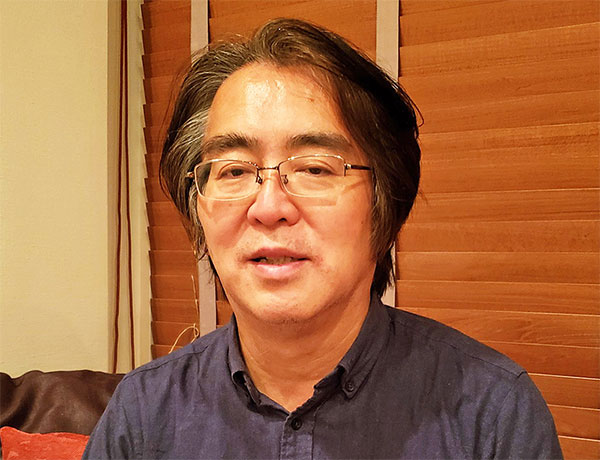
Photo courtesy of Hiroi Yoshinori
Prof. Hiroi was also surprised at the match between AI’s analyses and predictions related to urban intensive areas, which highlighted harmful effects of overcrowded cities. Together with Hitachi, Ltd., Prof. Hiroi is now conducting simulations of a post-Covid society. In order to solve social issues, he says that collaboration between social sciences and natural sciences like engineering are key. The former excel in pointing out social agendas and the latter have a variety of tools for social solutions.
The Most Desirable Society is Multipolar
Prof. Hiroi says that the Covid-19 epidemic has exposed vulnerabilities of urban-intensive societies. What is needed to realize a sustainable welfare society in the post-Covid era?
“In the future, a decentralized dispersed society will be the axis. This has two meanings. One is to promote rural decentralization and to avoid the harmful effects of excessive urban concentration. But in a society with a declining population, excessive dispersion will only result in towns that are too depopulated to live in. So we can say that the most desirable form would be a concentrated yet multipolar society where many moderately-sized cities become ‘poles’ of the region" (Prof. Hiroi)
Hiroi cites German cities as a model for multipolar concentration. In Germany, even in cities with a population of approximately 50,000-10,000, the city center is bustling. The city center is a pleasant space that anyone can enjoy passing through.
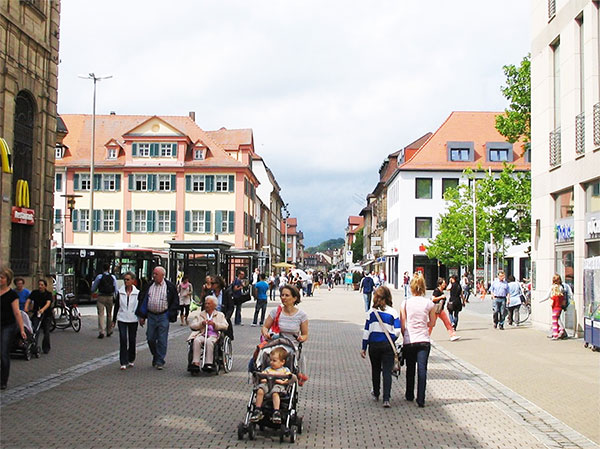
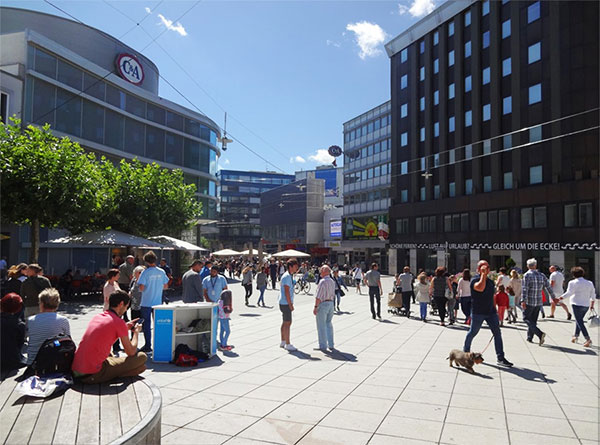
In Japan, most regional cities with 200,000 or fewer inhabitants are hollowing out. In many cases, their city centers are referred to as “shutter streets”, where most shop facades are permanently closed with metal shutters. However, some Japanese cities are on the opposite path. Takamatsu City in Kagawa Prefecture and Himeji City in Hyogo Prefecture are examples of cities going through urban development. People can enjoy strolling around city centers in these areas on foot.
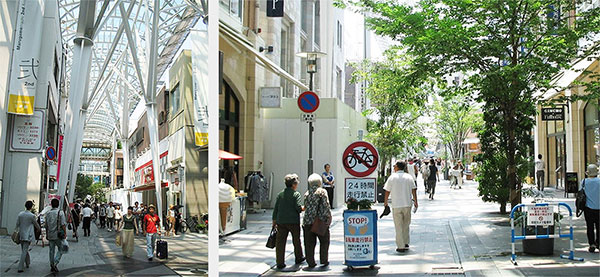
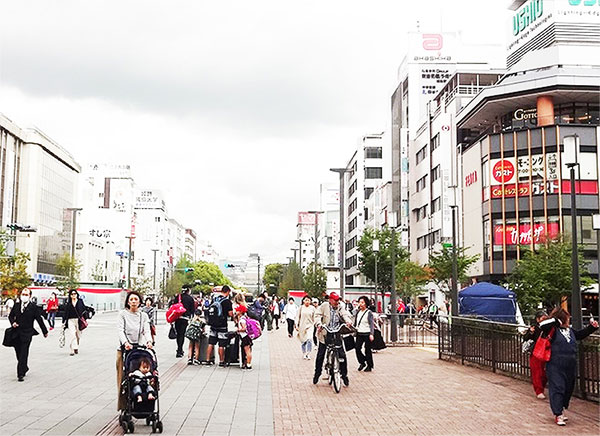
“Another meaning behind the notion of ‘from concentration to decentralization’ is the decentralization of life itself. The era of population growth represented by Japan’s Showa era (1926-1989) was a period where the masses traveled along a pre-designated life-path as a group. But from now on, people can design their own way of life and work in a more versatile manner--by teleworking, for instance. One’s “life design” is also being decentralized. Improving the degree of freedom in life choices can lead to personal happiness.” (Prof. Hiroi)
From Local to Global
Prof. Hiroi says that "In recent years, the younger generation is more comfortable with staying within his or her local neighborhood. There is hope for us to shift to a decentralized society if we are able to change our policies effectively.” He cited the Ishitoro-mura village in Gifu Prefecture as a model case for regional revitalization in Japan. In Ishitoro-mura, young people who newly emigrated there or those who returned from urban cities are engaged in regional revitalization activities centered around a small hydroelectric power-generation project.
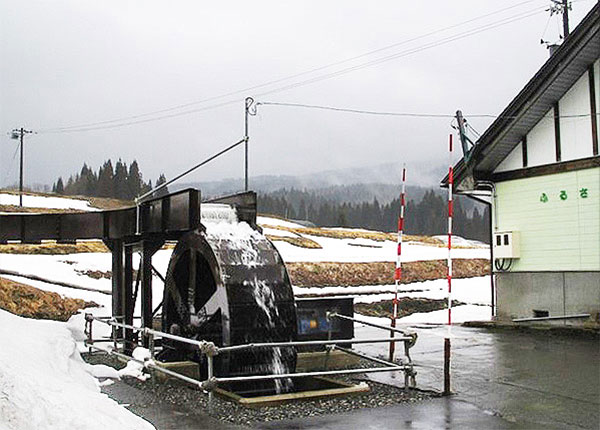
Covid-19 has shown the risks of excessive globalization, and localization is drawing attention again. Bottom-up development that starts locally and builds up nationally, and eventually globally, will become increasingly important in the future.
Covid-19 Symbolized Transition to “Life”
Since the scientific revolution in the 17th century, the core concept of science has transitioned gradually from materials to energy and most recently to information. Now that the information society is maturing, what is the next core concept of science?
“In the future, we will shift to life. Life here is a concept that includes not only life science but also the meaning behind life and our ecosystem. Infectious diseases are also life-threatening problems, and this time I think the Covid-19 pandemic symbolically revealed the risks associated with living life out of balance with our ecosystem.” (Prof. Hiroi)
Ray Kurzweil, the American inventor, thinker, and futurist, predicted that humans would eventually transcend life since life can be reduced to information. However, Prof. Hiroi points out that such an "informational” view of life ignores its proactive and intrinsic characteristics.
According to Prof. Hiroi, “Life is more than just an accumulation of information. By pushing the informational view of life to the limit, human beings may be able to transcend physical limits in a sense, but does that provide a sustainable happy future for us? In the future, people will be more interested in life itself, and the concept of science will shift.”
The transition from information to life also affects industrial structures. Life-related industries, specifically healthcare, environment-related fields, living/welfare, agriculture and culture, will become more important than ever. Moreover, it is worth noting that these focus-areas are going to be local and small. A society that places life at the center of its core values also fundamentally believes in a localized, decentralized society, Prof. Hiroi explained.
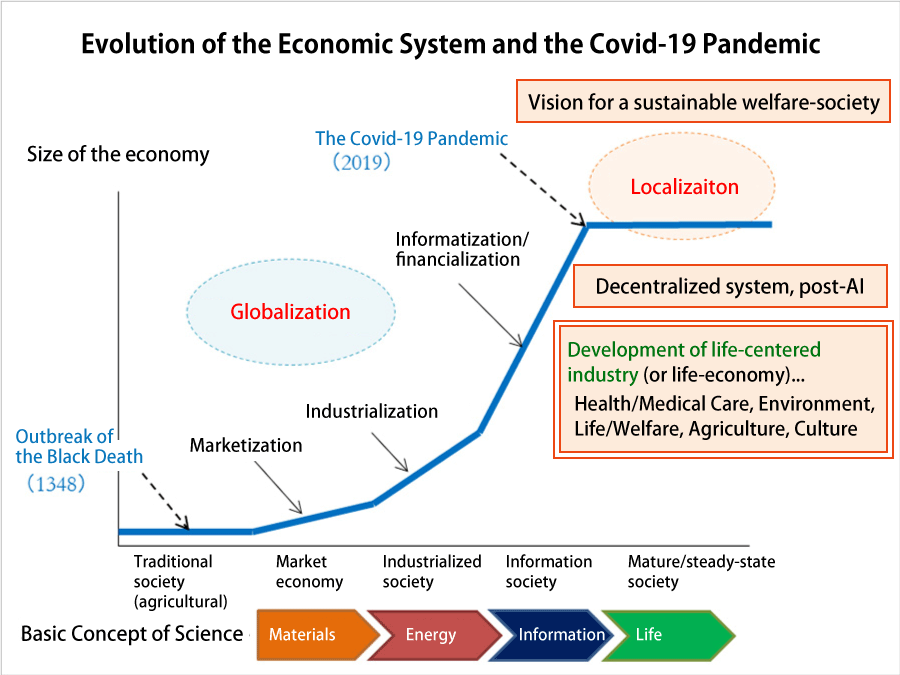
Find and Pursue What You Like
Finally, the editorial team asked Prof. Hiroi for his message to young people who will lead our future.
“I want you to find and pursue what you like and what you want to do. Now is not the time to move toward a single purpose. Your future will be in a society where each person designs and follows his or her own life path. I think this is important for both personal well-being and society’s well-being.” (Prof. Hiroi)
Prof. Hiroi also emphasized the importance of thinking things through with a long-term perspective.
Human beings have cycled through phases of expansive growth and steady progress three times in history. First came the hunting era, then about 10,000 years ago the farming era, and after that the industrialization era, which started about 300 years ago. During the transition from the expansive stage to the steady period, major cultural innovations like Lascaux's mural paintings and ancient Japanese Jomon pottery appeared. Ideas like Buddhism and Greek philosophy were born.
Faced with sustainability issues, mankind is steering itself from material development towards spiritual and cultural growth. Now that we are in the third transitional phase in human history, we can say that the foundation for realizing truly affluent spiritual development is taking a strong foothold. What kind of cultural innovation to bring about, and what kind of future society to create--that depends on us.
Prof. Hiroi Yoshinori also took the stage at the opening session of Science Agora 2020 to discuss the theme of "Life" (15 Nov. 2020).
Column: Guardian Forest─A Community Project
Prof. Hiroi is currently working on a project in Yawata City, Kyoto Prefecture, in Chichibu City, Saitama Prefecture, and many other places to explore new connections between the guardian forest, the local community, and modern society. In Japan the guardian forest is linked to nature worship and views on life and death. The forest is also the center of the local community for rites, festivals and other events. Therefore, Prof. Hiroi and his colleagues are working to review the role of the guardian forest once again, and to develop it in connection with modern issues like utilization of natural energy.

*Photo courtesy of Hiroi Yoshinori
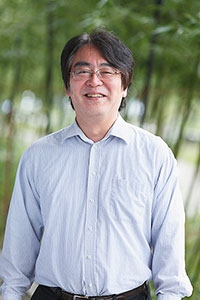
Hiroi Yoshinori
Professor at Kokoro Research Center Kyoto University.
After completing the master's program at the University of Tokyo, he worked for the Ministry of Health and Welfare, and served as Professor at the Faculty of Law and Economics at Chiba University before assuming his current position in 2016.
He specializes in public policy and philosophy of science. He is developing a wide range of research, from policy research on social security and cities/regions, to the outlook on life and death.
Original article published on JST Science Window
Translated by the SSC Secretariat







